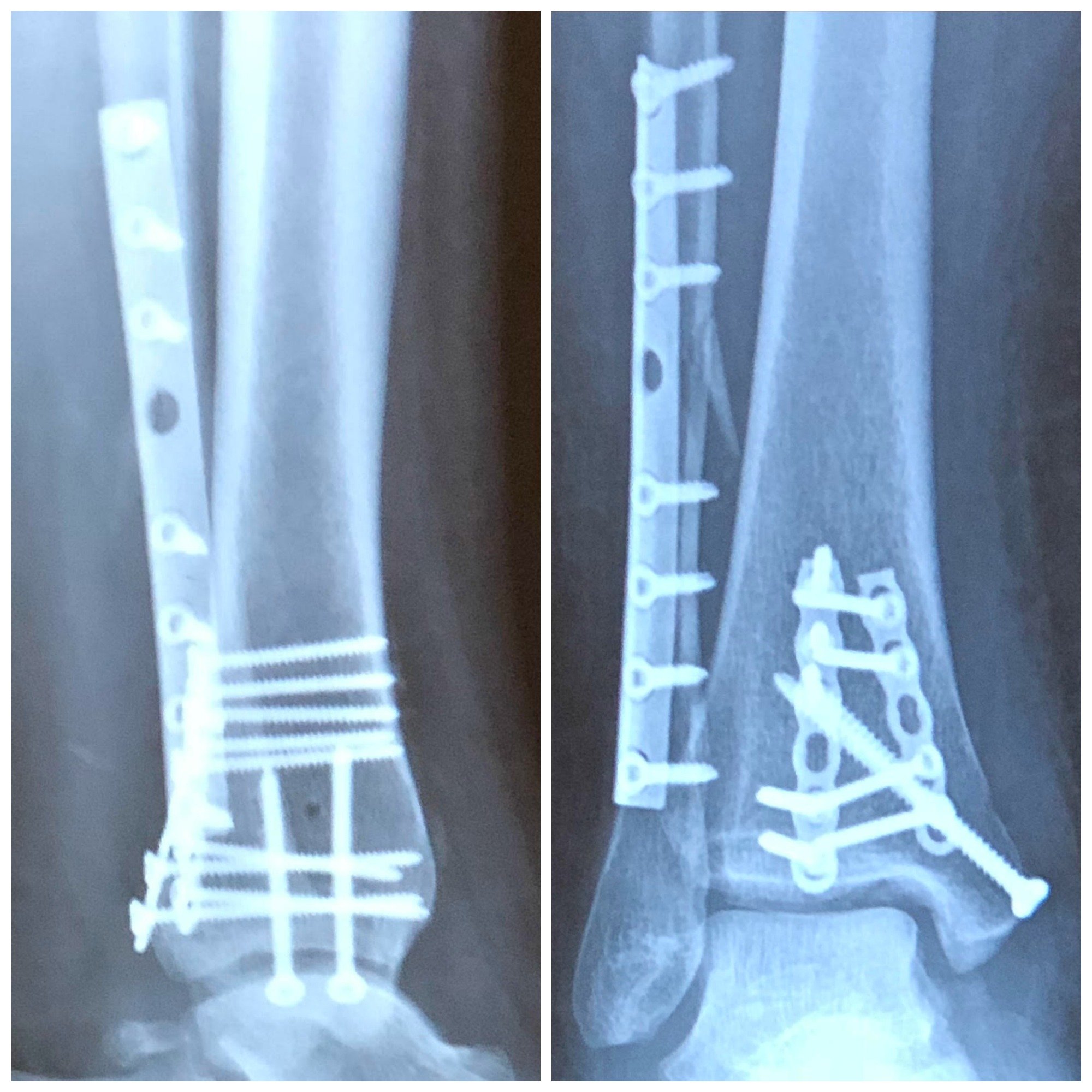
- #TRIMALLEOLAR FX FULL#
- #TRIMALLEOLAR FX SERIES#
#TRIMALLEOLAR FX SERIES#
Once in a while, the patient has to undergone series of x-rays to check if the bones are properly aligned.
#TRIMALLEOLAR FX FULL#
Some patients usually takes 9-12 weeks before the full recovery. This is usually left for about 5-6 weeks to make sure that the bones are fully recovered. Usually the patient will have to wear a short-leg cast or a removable fracture boots to make sure that the legs fixation devices will be in place. Surgeries and operations are not easily healed and needs time to make sure that the patient can gain their body homoeostasis and to assure that the bones are properly back o it’s normal state.
Damage on the nerves, tendons and blood vessels. Delayed in the wound healing process resulting to a more unstable condition. Sepsis or infection because the body is being open making it prone to different foreign objects anf microorganisms such as osteomyletis. Hemorrhage or excessive bleeding since the bone is one of the organs that produces red blosd cells (RBCs). Recurring conditions that does not encourage heavy lifting such as osteoporosis and neuropathy. Athletes who engages to high impact sports. Operations and surgeries may have associated complications and risks since it involves an open procedure: Other procedures of this place the screw along the back of the shin bone. Posterior Malleolus Fracture – the screws are placed from the front of the ankle to its back part (vice versa). Medial Malleolus Fracture – since this a fracture that involves an impact or indent on the ankle joint, bone grafting is necessary. The bones are held together with a screws and metal plates to attach the outer surface of the bone. Lateral Malleolus Fracture – the bone are reduced into their normal alignment. 
There are also different approaches of this surgical procedure depending on which bone area is affected during the dislocation or fracture:

It usually aids in reducing the occurrence of arthritis on the ligaments.
Bone Grafting – this procedure involves scaffolding a new bone to grow another bone. Upon once the bone is opened the area of the fracture will be placed with screws, pins or any fixation device to make sure that the bones re properly aligned and back to its normal positions. Open Reduction and Internal Fixation (ORIF) – it brings the fracture bones back o the normal position by an open operation and inside the bones and ligaments. Since it is a fracture in the bones and it concerns ligaments and joints surgeries are the most effective way to correct such condition: Immunoglobulins – to aid the immune system of the patients and to immunized them from Clostridium tetani products which is usually from the fixation devices. The significance of the dye or radioactive material is that they are attracted to the damage areas giving a result for the fracture area. Bone scanĪ dye is being injected to the vein to give a cleared image of the bones. Usually this diagnostic exam assures no overlapping of results and images of the bones. Most fractures are requested to undergo x-rays to assure the different angles are being seen. Some of the fracture in the bones may not be necessary for imaging tests but severe complications may need for further assessment and diagnosis. Pain upon carrying weights on the injured ankle. 
Dislocation or misplacement of the foot.The patient may experience the following signs and symptoms upon bone fracture: Over usage of the foot or the ankle – usually causes stress fracture on the individual.Wrong positioning of the ankles while twisting and rotating.Big impact on the ankle during an accident.







 0 kommentar(er)
0 kommentar(er)
